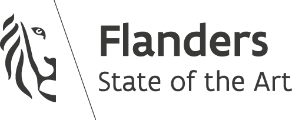Program – O Haupt
Content:
Setting
Version A: traverso, oboe, violin, viola, cello & harpsichord
Version B: oboe, violin, viola, cello & harpsichord
Program
Version A: traverso, oboe, violin, viola, cello & harpsichord
Johann Gottlieb Janitsch
- Sonata da camera for flute, oboe, viola & basso continuo in c, Op. 1 nr. 1
- Sonata da chiesa for flute, violin, viola & basso continuo Op. 7, nr. 2
- “O Haupt voll Blut und Wunden” Sonata da camera for oboe, 2 violas & basso continuo in g
- Quartet for flute, 2 violas & basso continuo in C
- “Echo” Sonata da camera for flute, oboe, violin, viola & basso continuo in D, Op. 5, nr. 1
Version B: oboe, violin, viola, cello & harpsichord
Carl Philipp Emanuel Bach (1714-1788)
Oboe sonata in g, H.549 (oboe & continuo)
Adagio
Johann Sebastian Bach (1685-1750)
Partita for harpsichord in Bes, BWV 825 (harpsichord solo)
Allemande
Johann Gottlieb Janitsch (1708-1762)
Sonata da camera in g, O Haupt vol Blut und Wunden (oboe, violin, viola & continuo)
Largo e mestoso – Allegretto – Adagio ma non troppo – Vivace non troppo
+++
Georg Philipp Telemann (1681-1767)
Trio sonate for violin and viola in D, TWV 42:D11 (violin, viola & continuo)
Allegro – Adagio – Vivace
Georg Philipp Telemann (1681-1767)
Oboe concerto in D, TWV 51:D5 (oboe, violin & continuo)
Adagio
Johann Sebastian Bach (1685-1750)
Cello Suite in D, BWV 1012 (cello solo)
Gavotte I & II
+++
Johann Joachim Quantz (1697-1773)
Triosonata in c, QV 2:Anh.5 (traverso, oboe, violin, viola & continuo)
Andante Moderato, Vivace
Johann Sebastian Bach (1685-1750)
Partita for flute solo in a, BWV 1013 (flute solo)
Allemande, Bourree
Carl Philipp Emanuel Bach (1714-1788)
Oboe sonata in g, H.549 (oboe & continuo)
Vivace
+++
Johann Sebastian Bach (1685-1750)
Sonata for violin & harpsichord in A, BWV 1015 (violin & harpsichord)
Andante un poco, Presto
+++
Johann Gottlieb Janitsch (1708-1762)
Quartet in c (from 5 Quartets) (oboe, violin, viola & continuo)
Poco largo, Alla breve, Allegro moderato


